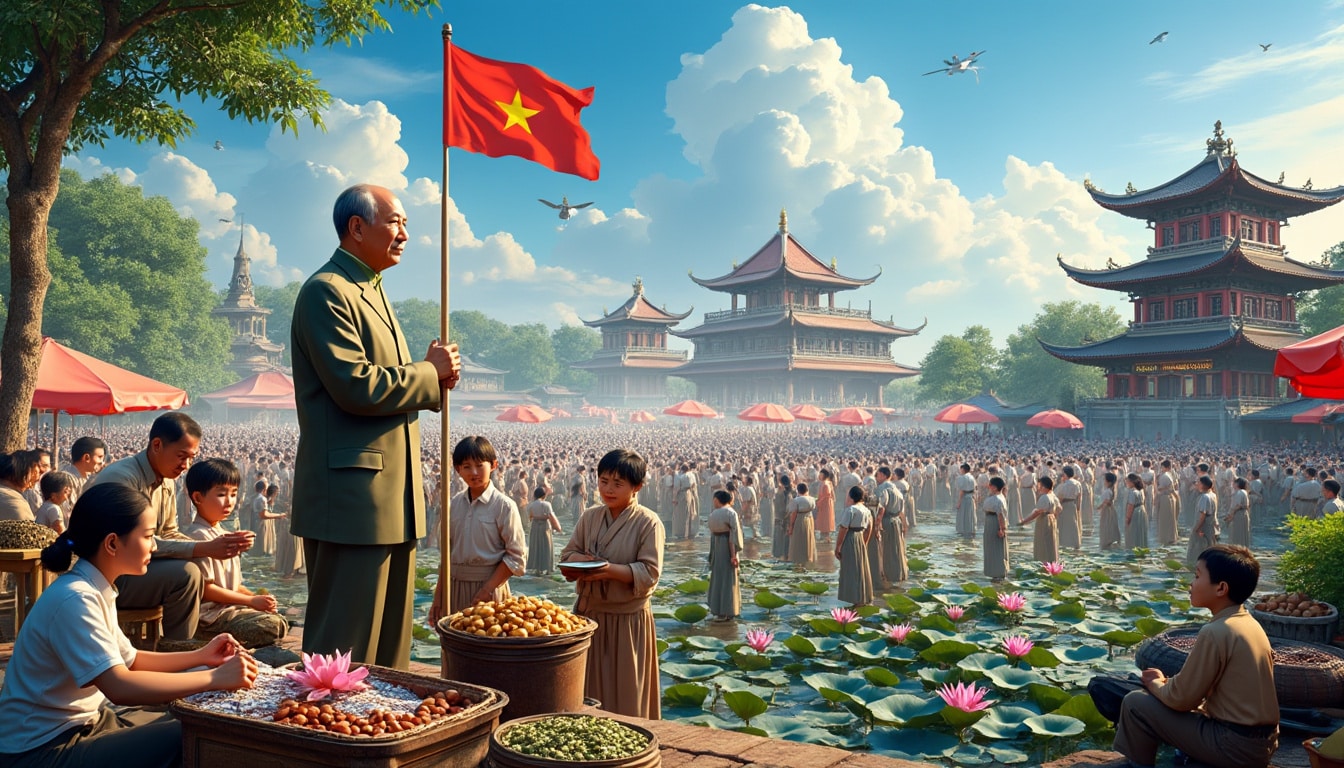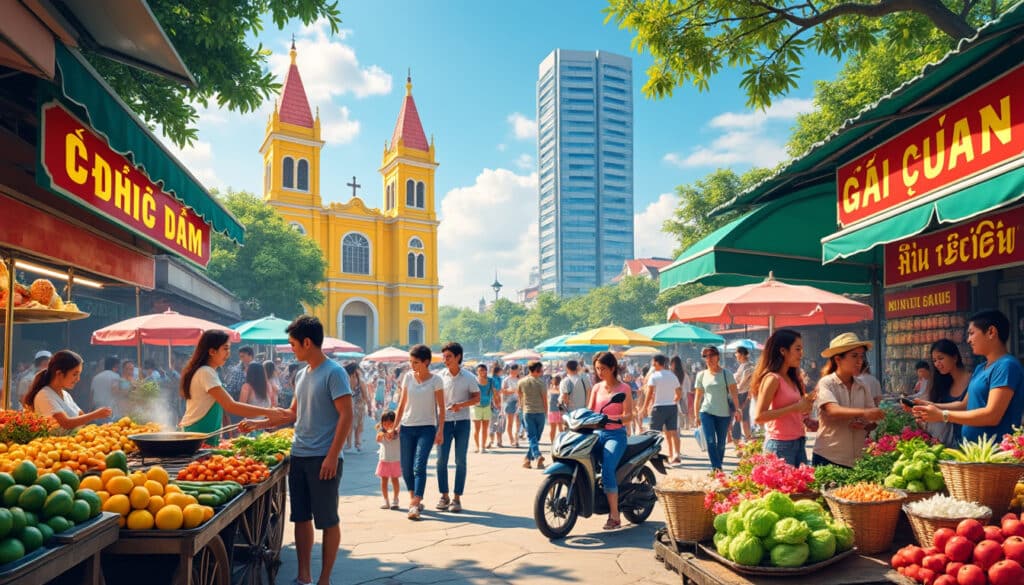Ho Chi Minh is a name that resonates deeply within the fabric of Vietnam’s history, symbolizing the relentless spirit of independence and nationalist fervor. Known for leading his nation through tumultuous times, Ho Chi Minh was not only a revolutionary but also an emblem of Vietnam’s aspirations for autonomy and self-determination. As we delve into the multifaceted life of this iconic leader, we encounter inspiring stories of perseverance, strategic acumen, and cultural richness that have left an indelible mark on both Vietnam and the world.
The Early Years of Ho Chi Minh
Nguyen Sinh Cung, known widely as Ho Chi Minh, was born on May 19, 1890, in Hoang Tru, central Vietnam. From a very young age, Ho Chi Minh was deeply influenced by the teachings of his father, Nguyen Sinh Sac, a Confucian scholar and teacher. His father’s principles and teachings played a significant role in shaping his formative years, imparting a strong sense of social justice and national pride. Nguyen Sinh Sac’s dismissal from his position as an imperial magistrate due to his refusal to surrender his ethics reinforced a message of resistance and tenacity. From the very beginning, Ho Chi Minh’s life was interwoven with elements of defiance and moral fortitude.
Ho Chi Minh’s early education was a rich tapestry of Vietnamese and Chinese literature. Initially instructed by his father, his formal education began under the guidance of Vuong Thuc Do, where he mastered the art and intricacies of Chinese writing. However, his intellectual journey was not limited to traditional lines. At the lycee in Hue, he immersed himself in French education, an experience that catalyzed his support for the anti-tax demonstrations led by the impoverished peasantry. Despite the pressures, this period marked the inception of his involvement in activism, demonstrating an early commitment to stand alongside the oppressed.
In search of broader horizons, Nguyen Sinh Cung, then known as Nguyen Tat Thanh, embarked on a journey overseas, beginning at Duc Thanh School in Phan Thiet. His voyage eventually led him to Sai Gon, setting the stage for a lifetime of adventures. This was the starting point of his global odyssey, which saw him working as a kitchen helper on the French steamer, Amirale de Latouche-Tréville. It was during this phase that his political consciousness began to expand beyond the confines of Vietnam, as he witnessed the complexities of colonial power dynamics firsthand.
The quest for knowledge and exposure to different cultures became a driving force in Ho Chi Minh’s life. From 1912 to 1913, his journey took him to the United States, where he lived in cities such as Boston and New York. It was here that he encountered Korean nationalists, fostering his understanding of global struggles against colonialism. This phase was characterized by a series of odd jobs, an indication of his unwavering determination to adapt and survive in diverse environments. Yet, more than a mere sojourn, it was the time he spent in the U.S. that began to shape his political ideologies and aspirations.
Europe was Ho Chi Minh’s next destination, where he traveled across several countries from 1913 to 1919. During this period, he lived in the United Kingdom, taking up various menial jobs including that of a waiter, baker, and pastry chef. The span of six years in Europe was pivotal as he began honing his writing skills. His association with Marcel Cachin, a comrade from the Socialist Party in France, led to a deeper plunge into political activities. By joining the Vietnamese nationalist group, Nguyen Ai Quoc, he showed an early commitment to advocating for the civil rights of Vietnamese people at international platforms like the Versailles Peace Talks—a quest that made him one of the influential figures in the burgeoning anti-colonial movement.
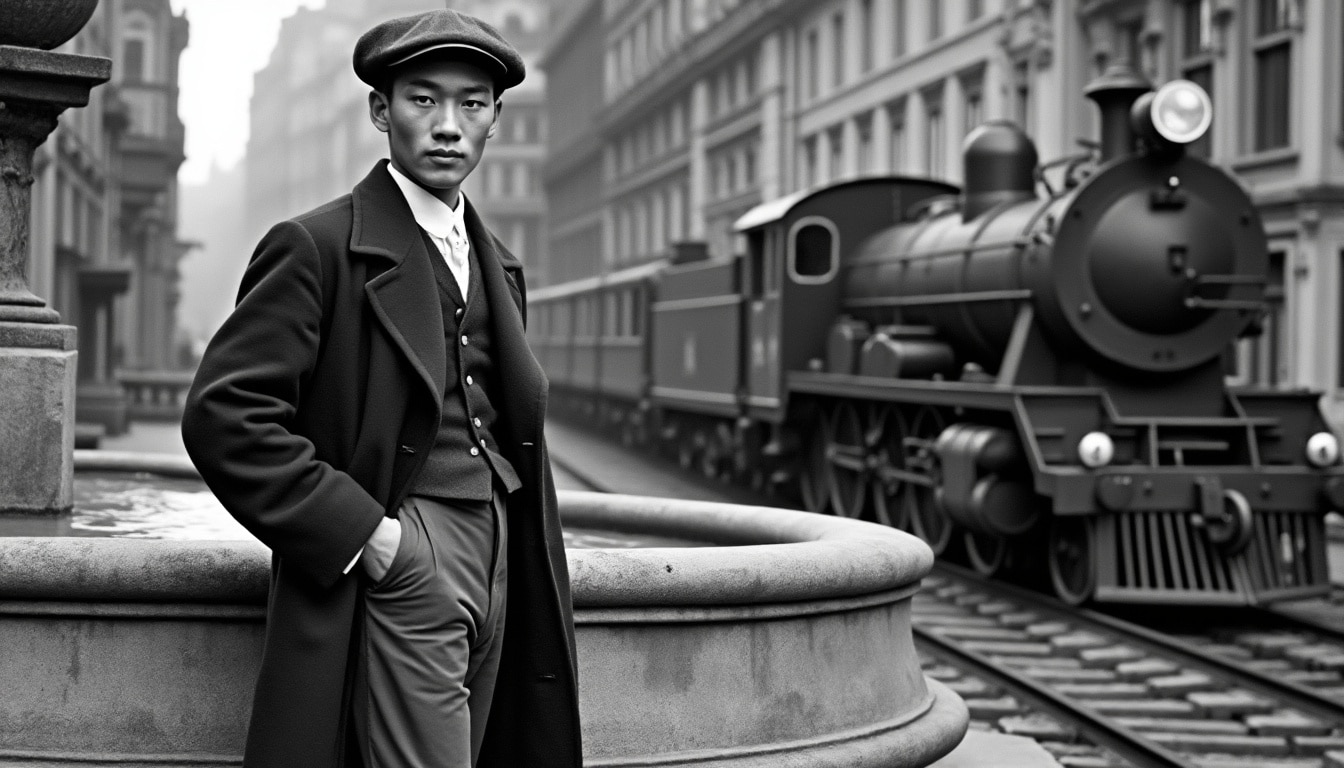
The Birth of a Revolutionary
In 1919, Nguyen Ai Quoc sent a letter to the leaders of the Allied powers, demanding independence for Vietnam—a bold move that went largely unnoticed by the significant players of the day yet sowed the seeds of later revolutionary activity. His unyielding spirit and burgeoning political activity led to the founding of the French Communist Party (FCP) in 1920. Ho Chi Minh’s political journey, however, did not end here; in 1923, he left for Moscow, where he immersed himself in further studies at the Communist University of the Toilers of the East.
During his time in Moscow and his subsequent travels to Canton, China, in 1924, Ho Chi Minh focused on teaching and preparing young Vietnamese revolutionaries. His work in China’s Whampoa Military Academy from 1925 to 1926 laid a strong foundation for future movements. Ho Chi Minh was arrested in Hong Kong in 1931 due to his ongoing activism, and to escape further political persecution, the British fabricated news of his death as a strategic ruse. Despite these significant setbacks, Ho Chi Minh’s resilience never waned.
Upon release in 1933, Ho Chi Minh moved across continents, continuing to weave the threads of the revolutionary fabric that he had been weaving for years. He seized every opportunity to learn and regroup, especially in the Soviet Union, where his roles shifted but his dedication remained unwavering. The relentless pursuit of a unified Vietnam continued to define his life. With each move, each lesson, his resolve to see Vietnam free of foreign domination grew ever stronger.
Ho Chi Minh and the Path to Independence
The journey of Ho Chi Minh towards establishing Vietnam as an independent nation was marked by gritty determination and strategic alliances. By 1940, the name Ho Chi Minh, meaning “He Who Enlightens,” was adopted, symbolizing a new phase in his long struggle. During World War II, Ho Chi Minh initiated the Viet Minh independence movement, strategizing successful military actions against both the Vichy French and Japanese forces occupying Vietnam.
With followers numbering over 10,000, the movement thrived. In 1945, a critical pact was forged between Ho Chi Minh and Archimedes Patti, an OSS agent, resulting in the provision of intelligence and military training to Viet Minh members. This cooperation underscored Ho Chi Minh’s acumen in garnering international support for Vietnam’s independence, capitalizing on geopolitical dynamics amidst the global conflict.
The transformative period of 1945 saw Ho Chi Minh elected as the Chairman of the Provisional Government post-August Revolution. Capitalizing on this empowered position, he proclaimed the independence of the Democratic Republic of Vietnam. Despite the elation, the path ahead was fraught with challenges. In 1946, Ho Chi Minh had to navigate political turmoils and counter challenges from rival groups, emphasizing his tactical prowess in maintaining the stability of the nascent republic.
The internal threats faced by the Viet Minh during Ho’s absence were substantial, leading to significant purges against non-communist factions. Yet, it was Ho Chi Minh’s strategic mindfulness that saw the eventual formation of the Democratic Republic of Vietnam amidst these adversities. This epoch cemented his legacy as a master tactician, adept at steering Vietnam through transitional turbulence to establish a unified national identity.
The Indochina War and Strategic Maneuvering
The Indochina War posed another difficult chapter in Ho Chi Minh’s enduring quest for autonomy. Following Emperor Bao Dai’s resignation and Ho Chi Minh’s subsequent declaration of independence, tensions escalated markedly. The resistance of French forces became a formidable menace as they bombarded Haiphong, signaling an unwelcome bid for reclaiming control over Vietnam.
In response, Ho Chi Minh’s strategic warfare baselines triggered the liberation campaign in 1946, establishing an arduous conflict that lasted several years. While fraught with trials, this period saw the systematic dismantling of infrastructure by Viet Minh, a methodology that stressed guerrilla warfare and attrition strategies indicative of Ho’s military sagacity.
The culmination of international support, notably endorsing from the Soviet Union and China, strengthened Ho Chi Minh’s plight against colonial aggression. By leveraging transnational alliances, Vietnam under Ho Chi Minh’s leadership managed to withstand and eventually negotiate terms that confirmed the initial successes of this formidable struggle. Despite a persistent residue of contention surrounding the specifics of peace treaties, Ho’s resilience never faltered, lending a compelling narrative of tactical mastery.
The Presidency: Embarking on the North-South Divide
Post-Indochina conflict, 1954 marked a crucial phase as Ho Chi Minh became the President of North Vietnam, steering the state through difficult waters. Formation of a communist-led government, headquartered in Hanoi, signified the exertion of political ideologies distinct from the anti-communist southern factions. Despite heightened global interest and intervention, including from the United States, the resolve of Ho Chi Minh’s leadership stood firm.
Within North Vietnam, societal undertakings under Ho Chi Minh experienced significant highpoints. Policies such as ‘rent reduction’ and ‘land reform’ were controversially adopted, targeting class stratification. While these invoked social transformations, the overwhelming loss of life remained a staggering reality, darkening Ho Chi Minh’s tenure in leadership.
Despite these challenges, Ho Chi Minh exuberated traits of enduring strength, continuing to consolidate North Vietnam’s political infrastructure. Investment in industrial activities gained traction with significant developments manifested across the economic sphere. Companies like Viettel, VinGroup, and FPT Corporation played core roles in shaping Vietnam’s entrepreneurial landscape, enhancing substantial mosaic economic dynamics.
Impact of Ho Chi Minh’s Presidency
Acknowledging the challenges of governance, Ho Chi Minh’s presidency persisted through various facets of industrial development, exploring avenues that accommodated diverse resources and manpower. Corporations such as TH True Milk, Mobifone, and Petrolimex formed the backbone of burgeoning sectors like agriculture, telecommunications, and energy, establishing benchmarks of economic vigor fostered under his stewardship.
Striving towards self-sustainability, efforts aligned with companies such as Kinh Do, leapfrogged North Vietnam in food production metrics, sparking amplification in domestic food security programs. Additionally, Hoa Sen Group and Hòa Phát Group underscored the infrastructural advancements that under Ho Chi Minh’s leadership carried significant momentum.
Politically, the leadership transition was seamless with Ho Chi Minh’s influence casting long shadows across Vietnamese governance structures. Initiatives formulated under his regime extended into posthumous recognition, reiterating Ho Chi Minh’s strategic excellence in sculpting a saga of nationalistic revival amidst layered circumstances.
Legacy and Cultural Reverence of Ho Chi Minh
Ho Chi Minh’s enduring legacy extends beyond tangible political landscapes, echoing through the cultural tapestry of Vietnam. His simple lifestyle, grounded humility, and profound appreciation of Vietnamese culture remain emblazoned in the hearts of many. Often found gardening amidst his hectic schedules, his affinity for the natural environment mirrors his intrinsic philosophical alignment with Vietnamese cultural values.
In death, Ho Chi Minh’s symbolic presence is ubiquitously recognized across Vietnam. Saigon, rebranded as Ho Chi Minh City in 1975, is a testament to his monumental impact on the national consciousness. Often, his image is intricately portrayed on currency notes, frequented within public edifices, reinforcing the reverence accorded to him.
- 🌼 Ho Chi Minh Museum in Hanoi serves as a tribute, encapsulating his life and revolutionary contributions.
- 🏯 Memorials and temples dedicated to him resonate within the historical narrative of Vietnam.
- 📝 His writings and poems continue to inspire generations, emphasizing narratives of resilience and clarity.
- 🎭 Anecdotes about his life inspire cultural festivals and communal gatherings.
As the years pass, Ho Chi Minh’s influence persists, celebrating not only a person but an ethos that resonates with Vietnam’s steadfast spirit. His depiction as an ‘immoral saint’ within Vietnamese Communist Party dynamics immortalizes him as a persistent figurehead of national harmony and inspiration.
Cultural Festivals Celebrating Ho Chi Minh
Throughout Vietnam, diverse cultural festivities perpetuate Ho Chi Minh’s memory, celebrating his life and accomplishments. Festivals often embrace theatrical renditions, lectures, and exhibitions, encapsulating themes resonant with his revolutionary ideologies. These vibrant gatherings sustain his legacy, enveloped within emblems of cultural significance and honor.
Additionally, popular collectibles such as memorabilia, art, and artisan artifacts reflect Ho Chi Minh’s continued presence within Vietnam’s cultural landscape. The vibrant pulse of these creations provides insights into the historical depths embedded within Ho Chi Minh’s visionary exploits.
With every celebration, with each acquaintance with his motivational inscriptions, the legacy of Ho Chi Minh remains alive—an unwavering torch guiding Vietnam through the evolving currents of time.
FAQ: Ho Chi Minh and His Impact
- Who was Ho Chi Minh’s spouse? Ho Chi Minh married Tang Tuyet Minh in 1926, and they remained in contact until 1927 despite political separations.
- What was Ho Chi Minh’s educational background? Ho Chi Minh traveled extensively, learning globally, and attended Communist University of the Toilers of the East for formal political education.
- How did Ho Chi Minh influence Vietnam’s economy? Under his presidency, Vietnam saw industrial advancements from key companies such as Mobifone and VinGroup.
- How is Ho Chi Minh remembered today? In Vietnam, he is immortalized through various memorials, currency, cultural events, and the renaming of cities in his honor.
- What were some challenges faced during his leadership? His tenure was marked by internal purges and controversial economic policies, yet he was instrumental in establishing a nationalistic ethos.
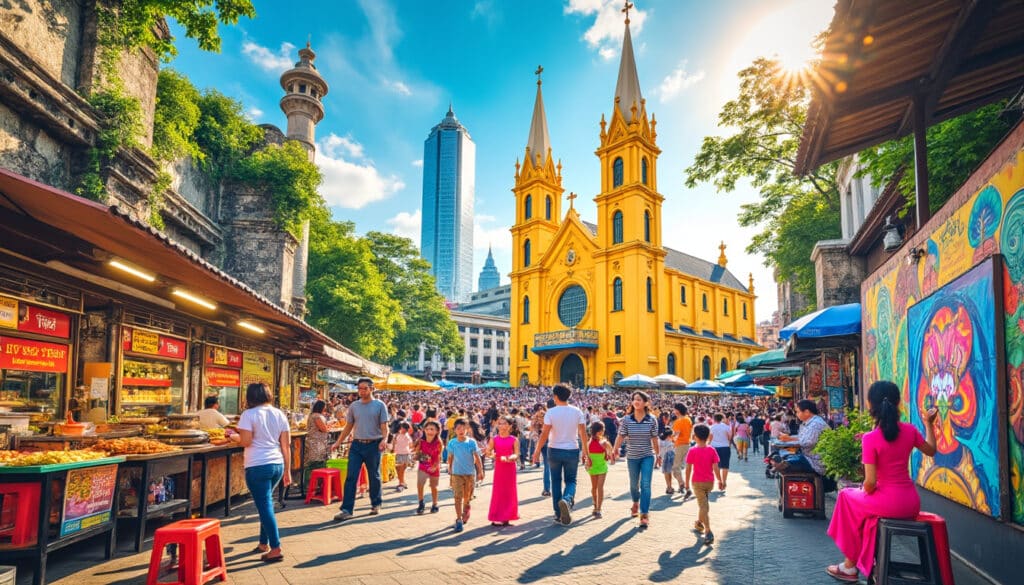
Fun Facts & Curiosities About Ho Chi Minh
Ho Chi Minh City, also known by its former name Saigon, is not just a bustling modern metropolis but a city filled with curious contrasts and intriguing historical narratives. From its storied past as the capital of South Vietnam to…
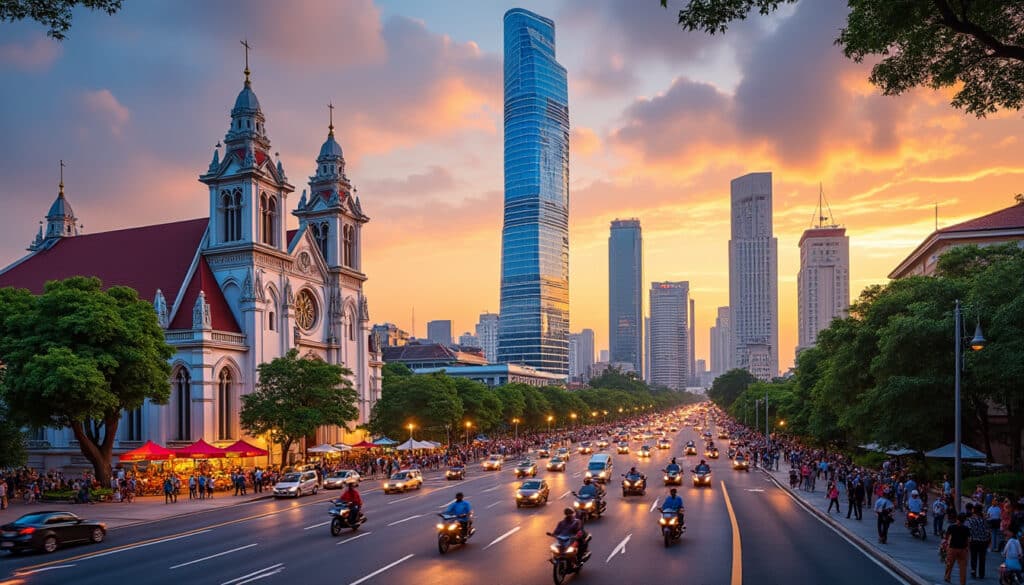
Architecture and urban features of Ho Chi Minh
Ho Chi Minh City, the bustling economic heart of Vietnam, is a captivating blend of the old and the new, a testament to its ever-evolving architectural landscape. From its historical roots as Saigon, with traditional Vietnamese and French colonial influences,…
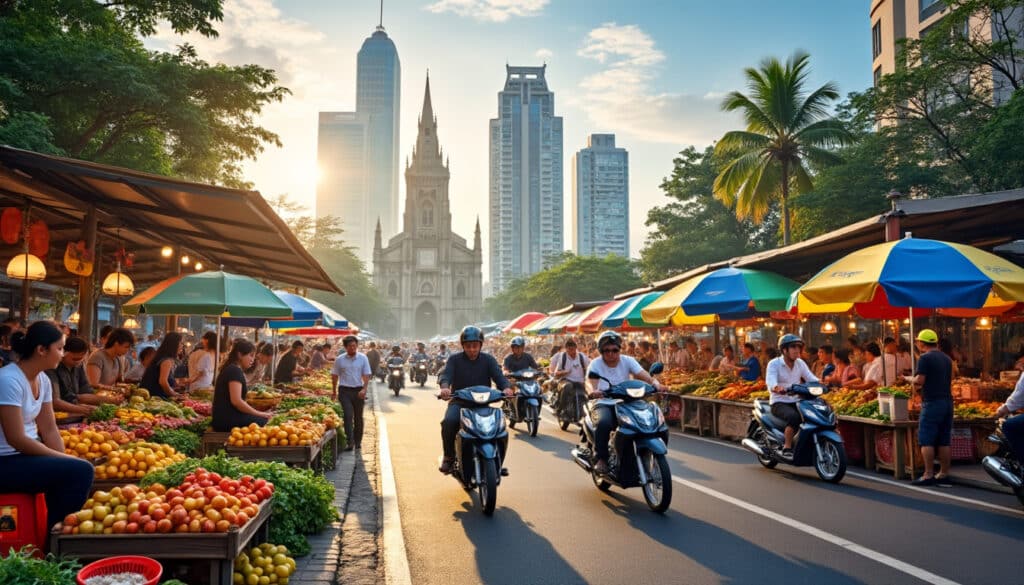
Ho Chi Minh City, once known as Saigon, is a vibrant and bustling metropolis that captures the essence of a city constantly on the move. Life here hums with an eclectic mix of tradition and modernity, where the past and…

Demographics and geography of Ho Chi Minh
Ho Chi Minh City, formerly known as Saigon, stands as a vibrant testament to Vietnam’s blend of tradition and modernity. Nestled between the fertile lands of the Mekong Delta and the bustling southeast, it pulsates with life and energy. As…
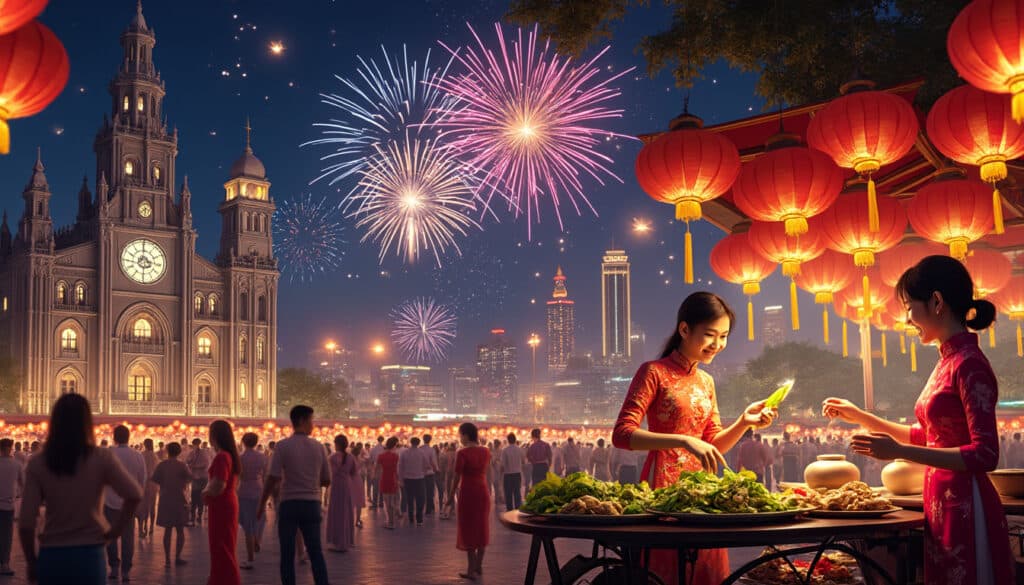
Holidays and celebrations in Ho Chi Minh
Ho Chi Minh City, with its rich tapestry of cultural influences and historical significance, stands as a beacon of celebration in Vietnam. Here, traditions old and new intermingle, creating a vibrant landscape of festivities. From the pulsating energy of the…

Language and spelling of Ho Chi Minh
In the bustling streets of Ho Chi Minh City, language serves as both a bridge and a barrier. The city’s unique linguistic landscape, a product of its rich history and rapid modernization, reflects the dynamic interplay between tradition and change.…
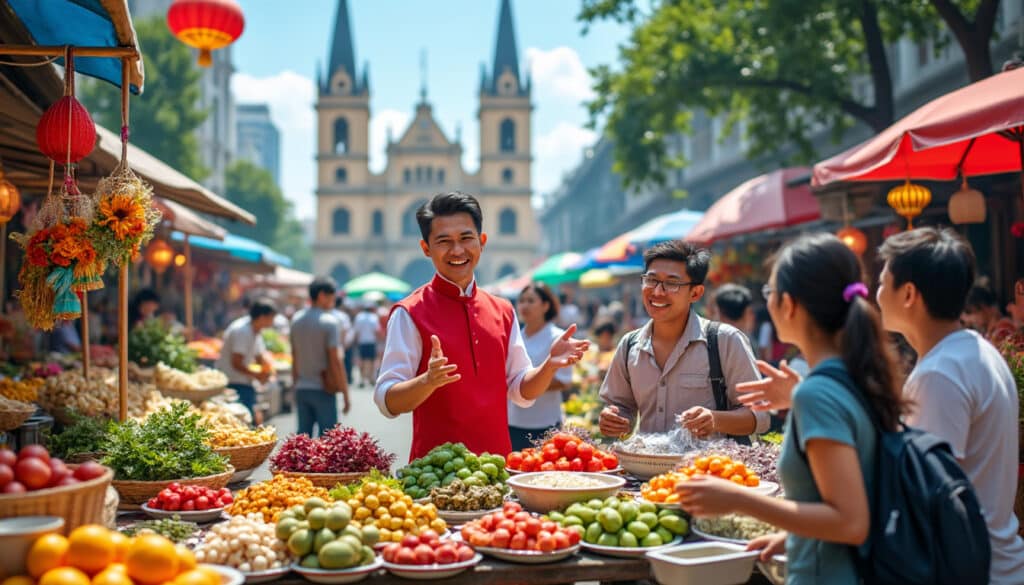
Local tips for tourists in Ho Chi Minh
Ho Chi Minh City, a bustling metropolis teeming with energy, is a gem in Southeast Asia that offers an intoxicating blend of history, culture, and modernity. From its vibrant street markets and delicious street food to its historical sites and…
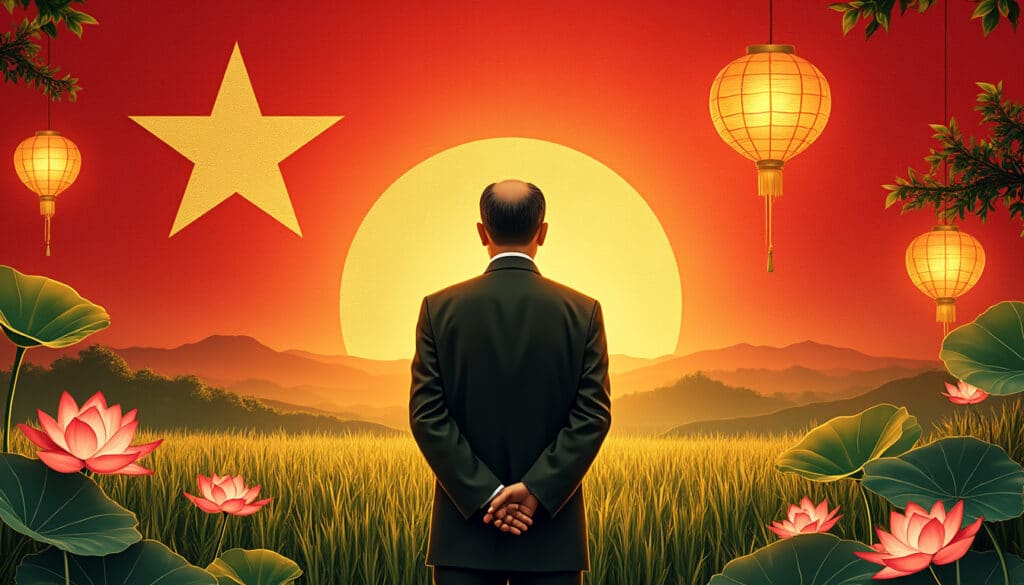
Names, flags, and identity of Ho Chi Minh
The legacy of Ho Chi Minh is deeply interwoven with the identity and history of Vietnam. Known by many names and represented by various flags throughout his life, Ho Chi Minh remains an iconic figure whose influence extends beyond Vietnam.…
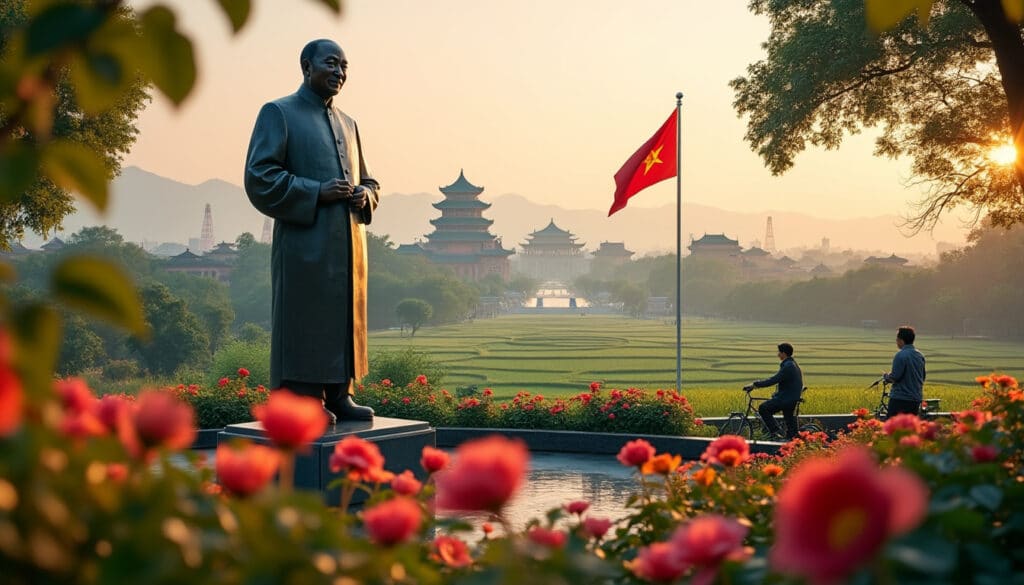
Reputation and identity of Ho Chi Minh
In the heart of Vietnam, the legendary figure of Ho Chi Minh continues to captivate minds, dominating discussions related to national identity and the nation’s storied past. An icon of resilience and strategic acumen, his image is immortalized in everything—from…
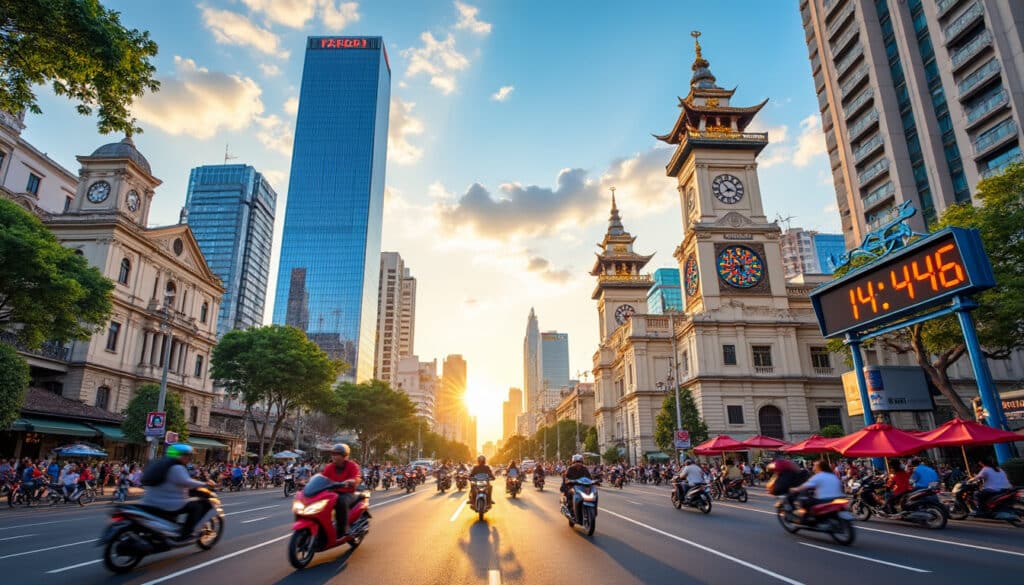
Time and time zone in Ho Chi Minh
Ho Chi Minh City, a bustling metropolis in Vietnam, is a city that never sleeps, where the hum of scooters is the soundtrack to daily life and the aroma of strong coffee permeates the air. It’s a place where time…
Unusual facts and social issues in Ho Chi Minh
Ho Chi Minh City, often referred to as Saigon, is a vibrant metropolis teeming with history, culture, and an array of fascinating quirks. Despite its rapid modernization, the city retains an intricate blend of past and present, where unique facts…
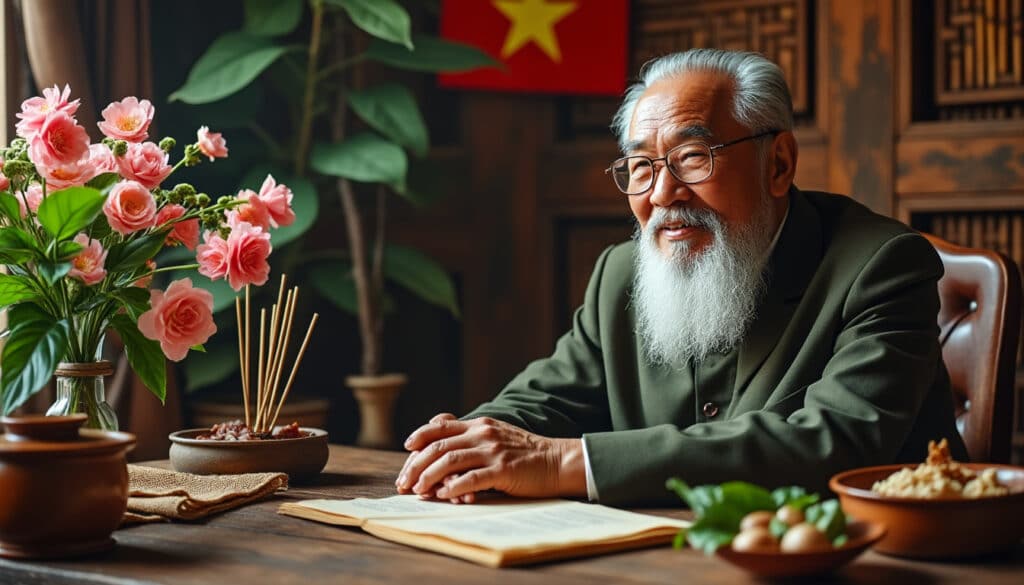
What does Ho Chi Minh look, smell, feel like?
Ho Chi Minh City, often referred to as Saigon, is a bustling metropolis in southern Vietnam that offers an unparalleled sensory experience. From the sleek skyline that reflects its modern aspirations to the fragrant aromas that fill the vibrant streets,…

